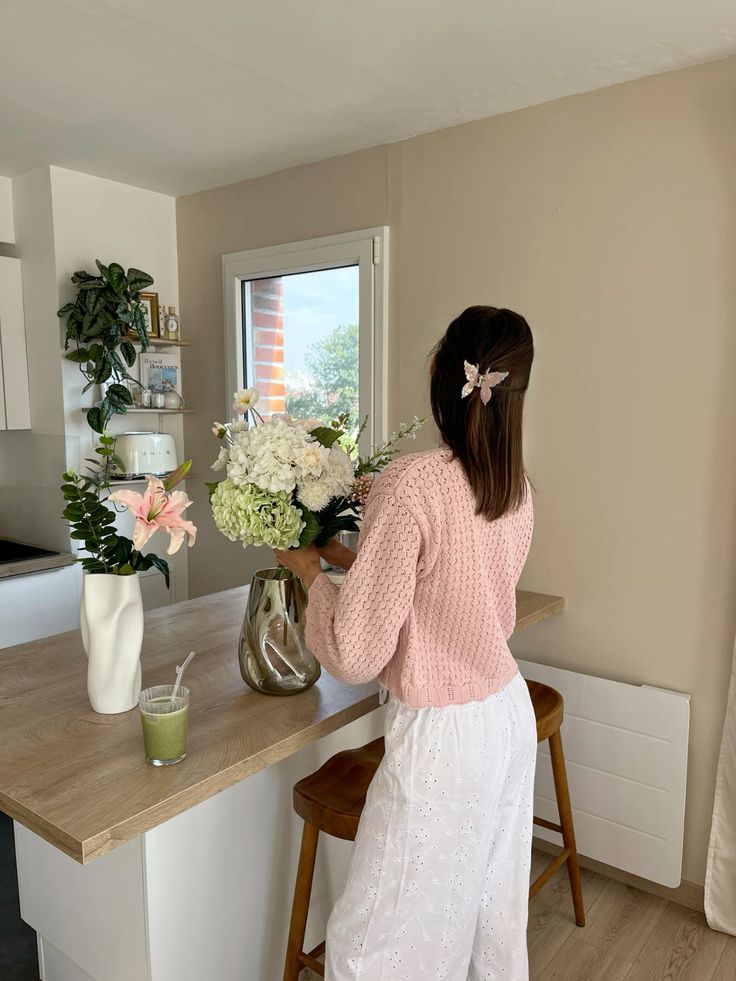Blogging is an accessible way for you to share your ideas, hobbies, or expertise with a wider audience online. To become a blogger, you simply need to choose a topic you care about, set up a blog on a reliable platform, and start publishing your own content. Whether you’re interested in expressing your creativity or looking to build an online presence, blogging can open up new opportunities for learning and connection.
As you explore the world of blogging for beginners, you’ll find there are plenty of tools to help you create a blog that suits your style and goals. With consistent effort, your blog can grow into a successful platform that connects you with others who share your interests.



Key Takeaways
- Pick a topic that excites you and aligns with your goals.
- Use a trusted service to set up and design your blog.
- Share regular posts to connect with readers and grow your blog.
Decide on Your Blog Niche
Choosing the right blog niche sets a strong foundation for your future content and growth. It helps you attract readers interested in your specific area and can make it easier for your blog to stand out.
Brainstorm Your Blog Topic
Start by listing your interests, skills, and experiences. Think about what subjects you enjoy reading or talking about, and where your expertise lies. This is the core of your blog topic.
If you’re building a personal blog, ask yourself what stories, tips, or knowledge you can share that are different from what’s already out there. Use a simple table to help organize your thoughts:
| Interest | Knowledge Level | Potential Audience |
|---|---|---|
| DIY Home Projects | Advanced | Homeowners, Renters |
| Plant-Based Cooking | Intermediate | Vegans, Cooks |
Look for topics you can write about consistently and that you won’t lose interest in over time. You can also check trending topics or niche forums to see what questions people are asking.
Identify Your Target Audience
Think about the readers you want to attract. Define the age group, interests, problems, or goals of your audience. Are you writing for beginners or for professionals?
Understanding your readers’ needs ensures your content remains relevant. Tailor your writing style and blog name to fit these readers. Research what your desired audience likes and dislikes by observing similar blogs or social media groups.
It helps to create a simple reader profile. For example:
*Primary Audience: First-time gardeners looking for easy plant care tips.
*Secondary Audience: Experienced gardeners seeking in-depth guides.
The clearer your audience definition, the more likely your posts will connect with the right people.
Evaluate Competition
Search for other blogs covering your chosen niche. Make a list of what makes these blogs strong or popular. Look for recurring weaknesses, such as lack of specific details or outdated information.
Use tools like keyword research software to gauge how crowded your niche is. Identify opportunities, such as writing about subtopics that competitors haven’t covered. For example, if most travel blogs focus on luxury trips, you might write about budget travel tips.
Analyze competitors’ blog names, content length, and post frequency. This research helps you see where your blog can offer something unique or better. Understand the competitive landscape before finalizing your niche.



Choose a Blogging Platform and Domain Name
Selecting the right blogging platform and a unique domain name are the first big steps to start a blog. Your choices here impact how you manage your blog, connect with readers, and build your brand online.
Compare Blogging Platforms
You’ll find several types of blogging platforms such as WordPress, Wix, and Squarespace. Each has pros and cons worth considering.
WordPress.org (self-hosted) is the most popular choice for those who want full control and customization. You install it on web hosting you choose. With thousands of plugins and themes, it helps you shape your blog exactly how you want.
Wix and Squarespace are all-in-one website builders. They offer simple drag-and-drop interfaces, but less flexibility than self-hosted WordPress for deep customization, especially if you want to add features later.
Here’s a quick comparison:
| Platform | Ease of Use | Customization | Cost |
|---|---|---|---|
| WordPress.org | Intermediate | Extensive | Varies by host |
| Wix | Easy | Moderate | Free + Paid plans |
| Squarespace | Easy | Moderate | Paid plans only |
If you’re planning to monetize or grow your blog long-term, a self-hosted WordPress blog gives you the most room to expand.
Select and Register a Domain Name
Choosing a domain name is the next step. Your domain, like “yourblogname.com,” is your blog’s online address.
Try for a custom domain name that is easy to spell and memorable. Avoid numbers and hyphens, and make sure your chosen name doesn’t infringe on trademarks. Many web hosting companies, such as Bluehost, offer a free domain name for the first year when you start a blog with them.
Check your domain’s availability using their search tool before you register. If it’s taken, try creative alternatives, abbreviations, or adding keywords.
Once you land on a name, you’ll register it with your hosting provider or a domain registrar. You’ll need to set up a username and connect your domain with your blogging platform.
Pick a Hosting Plan
A hosting plan powers your blog and makes it accessible to readers worldwide. The server stores your blog’s files, and the plan you pick affects site speed, uptime, and support.
Shared hosting (like what Bluehost offers) is affordable and suitable for beginners. It allows multiple websites on one server. As your blog grows, you might consider upgrading to a VPS or dedicated server for better performance.
Look for a provider with good customer support, strong uptime records, and easy WordPress installation options. Some hosts offer package deals that include a free domain name, SSL certificate, and automatic backups to help protect your site. Read the details before you select your hosting plan, so you get just what your blog needs right from the start.



Set Up and Design Your Blog
Building a blog is more than just choosing a name—how your blog looks, feels, and functions matters to your readers. Good blog design involves installing the right theme, optimizing the layout and navigation, and ensuring your settings support a smooth visitor experience.
Install and Customize Your Theme
The first step is selecting and installing a theme that fits your blog’s personality and goals. On WordPress, you can choose from thousands of free and premium themes tailored for various blog topics and styles. Other platforms like Blogger or Wix also offer diverse theme libraries.
Once you pick a theme, install it from your platform’s dashboard. After installation, use the “Customize” or “Edit” option to adjust colors, header images, fonts, and logos. Preview each change before publishing to ensure it looks good on multiple devices—PC, Mac, tablet, and smartphone.
Personalize key elements such as your blog name and address. A well-customized theme makes your blog distinct while still being readable and visually appealing. Remember to save or publish changes only after confirming everything looks right.
Design Layout and Navigation
A clear layout lets your readers easily find content and navigate to important sections. Start by arranging your homepage: decide whether you want a static page or a list of recent posts. Many themes let you use drag-and-drop tools to place widgets, banners, or featured articles.
Use a simple menu structure. Limit main navigation links to essential pages, like Home, About, and Contact. Add a search feature, category links, or a recent posts list to help visitors explore your content further.
Choose fonts that balance style and legibility. Stick with 1-2 font families for consistency. Pick a color scheme that fits your blog theme but also provides good contrast for readability. Check your layout’s appearance on different devices to make sure navigation stays user-friendly everywhere.
Configure Essential Settings
After customizing the theme and layout, review your blog’s key settings. On WordPress, important sections include “Site Title,” “Tagline,” and “Site Address (URL)” under Settings > General. Ensure your blog name is correct and that your chosen address appears as intended.
Set your default post format and adjust your homepage display preferences. Decide if you want posts shown as excerpts or full articles. Make sure to set your time zone, language, and privacy settings appropriately.
Enable key features such as mobile responsiveness, comment moderation, and social sharing buttons. Double-check that you have a visible favicon and set your reading, discussion, and permalink options for best results. These settings help your blog run smoothly and provide a better experience for your readers.



Create and Publish Content
To grow your blog and reach readers, you need to craft blog posts that inform or entertain, have a process for consistent publishing, and use helpful tools to enhance your writing. Your focus should be on writing valuable content, organizing your topics, and leveraging available technology.
Write Your First Blog Post
Start by choosing a topic you know well or are passionate about. This can make your writing more genuine and useful to readers. Select a clear and direct title for your new post, which helps set expectations from the start.
Write the main content in short paragraphs and use lists where appropriate. Breaking up information creates an easy-to-read format that encourages visitors to stay longer. If you have several key points, consider adding a table of contents at the top of the post.
Use simple HTML formatting for headings, bold text, and links. This makes your post more visually appealing, especially if your platform’s editor supports HTML.
Encourage engagement by ending your post with a question or invitation in the comments section. This invites discussion and helps build a community around your blog.
Develop a Content Strategy
Consistency is key for building an audience. Plan out your next blog posts using an editorial calendar. Choose how often you want to publish—such as weekly or bi-weekly—and stick to that schedule as closely as possible.
Brainstorm topics in advance and organize them by category. This ensures you cover a mix of posts that can educate, entertain, or guide your audience. Consider the types of content you want to create—a mix of tutorials, reviews, or opinion pieces can keep your blog lively.
Use your calendar to note deadlines, publish dates, and which topics need research or visuals. Scheduling content helps you avoid last-minute rushes and ensures your blog remains active and diverse.
Use Tools to Enhance Your Writing
Several online tools can help you write, edit, and manage your blog more efficiently. Use grammar and spell checkers to polish your written content and catch errors you might miss. Editors like Grammarly or Hemingway can point out hard-to-read sentences and improve clarity.
Many blogging platforms include features for scheduling posts, allowing you to prepare your articles in advance and set them to publish automatically. This is useful for maintaining your posting rhythm, even during busy weeks.
Consider using keyword research tools to optimize your posts for search engines. Simple content management features, like a built-in table of contents or support for embedding images and videos, can further increase your blog’s value to readers.
Grow and Monetize Your Blog
Consistent growth and effective monetization are essential for turning your blog into a profitable venture. Focusing on SEO, smart traffic techniques, audience engagement, and diverse income streams will help you build a successful blog.
Optimize for SEO and Traffic
Optimizing your content for search engines like Google is key to attracting organic traffic. Start by researching relevant keywords for every post, especially those linked to products, services, or questions beginners commonly ask.
Use these keywords naturally in your titles, headings, and throughout your posts. Make sure your permalinks are clear, simple, and include your primary keyword. Internal links and high-quality external links can also boost your SEO.
WordPress plugins such as Yoast SEO or Rank Math can guide you through on-page optimization. Ensure every post loads quickly and is mobile-friendly. Faster, accessible sites tend to rank better and keep readers engaged. Update old content regularly to maintain strong search engine rankings.
Leverage Social Media and Email
Social media is a powerful way to share your latest posts, interact with readers, and promote your blog to a wider audience. Create dedicated profiles for your blog on platforms like Instagram, Facebook, Pinterest, and X (Twitter). Each channel suits different content types; for example, use Instagram for visuals and Twitter for quick updates.
Encourage readers to subscribe to your email list from the start. Email remains a reliable way to reach your audience directly. Send a regular newsletter featuring new posts, special offers, and blog updates.
Consider offering a free resource or bonus in exchange for joining your list. Use email automation plugins in WordPress to send welcome emails and personalized content. Regular updates help to nurture loyal readers and potential customers.
Make Money Blogging
There are many ways to monetize your blog, even as a beginner. Popular options include displaying ads (Google AdSense), joining affiliate programs for commissions, offering sponsored posts, or selling digital products and e-books.
Ways to make your blog profitable:
| Monetization Method | Description |
|---|---|
| Affiliate Marketing | Earn commissions on product sales |
| Display Ads | Get paid for ad impressions/clicks |
| Digital Products | Sell e-books, printables, courses |
| Sponsored Content | Write posts for brands for a fee |
| Physical Products | Create and sell branded merchandise |
Before promoting a product or service, check for solid customer support, money-back guarantees, and favorable commission rates. Use WordPress plugins to manage ads or affiliate links easily.
As your blog grows, diversify your income streams to build a stable revenue base. Experiment with different options to discover what works best for your audience and niche.
- 65shares
- Facebook0
- Pinterest65
- Twitter0


